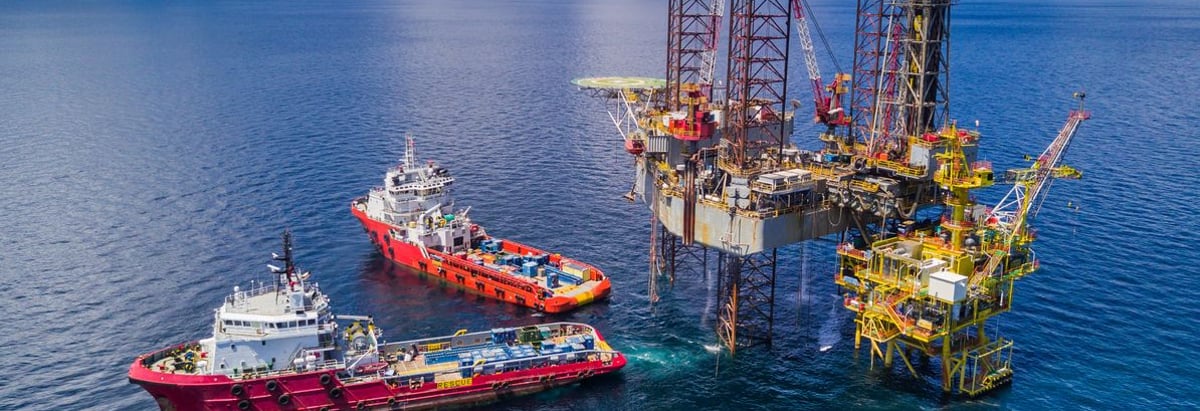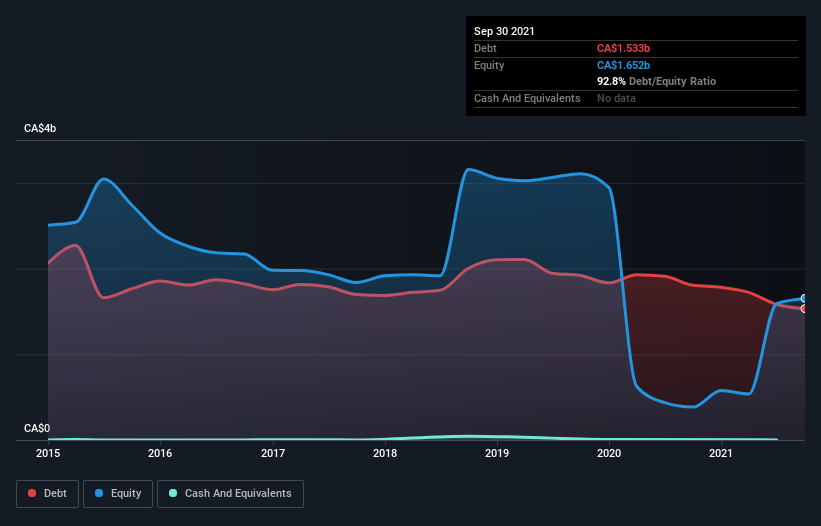
Some say volatility, rather than debt, is the best way to think about risk as an investor, but Warren Buffett famously said that 'Volatility is far from synonymous with risk.' So it might be obvious that you need to consider debt, when you think about how risky any given stock is, because too much debt can sink a company. We can see that Baytex Energy Corp. (TSE:BTE) does use debt in its business. But the real question is whether this debt is making the company risky.
When Is Debt A Problem?
Debt assists a business until the business has trouble paying it off, either with new capital or with free cash flow. If things get really bad, the lenders can take control of the business. While that is not too common, we often do see indebted companies permanently diluting shareholders because lenders force them to raise capital at a distressed price. Having said that, the most common situation is where a company manages its debt reasonably well - and to its own advantage. The first step when considering a company's debt levels is to consider its cash and debt together.
See our latest analysis for Baytex Energy
What Is Baytex Energy's Debt?
You can click the graphic below for the historical numbers, but it shows that Baytex Energy had CA$1.53b of debt in September 2021, down from CA$1.81b, one year before. And it doesn't have much cash, so its net debt is about the same.

How Healthy Is Baytex Energy's Balance Sheet?
Zooming in on the latest balance sheet data, we can see that Baytex Energy had liabilities of CA$405.2m due within 12 months and liabilities of CA$2.40b due beyond that. On the other hand, it had cash of CA$1.38m and CA$177.5m worth of receivables due within a year. So it has liabilities totalling CA$2.62b more than its cash and near-term receivables, combined.
When you consider that this deficiency exceeds the company's CA$2.41b market capitalization, you might well be inclined to review the balance sheet intently. Hypothetically, extremely heavy dilution would be required if the company were forced to pay down its liabilities by raising capital at the current share price. There's no doubt that we learn most about debt from the balance sheet. But ultimately the future profitability of the business will decide if Baytex Energy can strengthen its balance sheet over time. So if you're focused on the future you can check out this free report showing analyst profit forecasts.
In the last year Baytex Energy wasn't profitable at an EBIT level, but managed to grow its revenue by 29%, to CA$1.3b. Shareholders probably have their fingers crossed that it can grow its way to profits.
Caveat Emptor
While we can certainly appreciate Baytex Energy's revenue growth, its earnings before interest and tax (EBIT) loss is not ideal. Its EBIT loss was a whopping CA$2.3b. Considering that alongside the liabilities mentioned above make us nervous about the company. We'd want to see some strong near-term improvements before getting too interested in the stock. On the bright side, we note that trailing twelve month EBIT is worse than the free cash flow of CA$205m and the profit of CA$1.3b. So there is definitely a chance that it can improve things in the next few years. When analysing debt levels, the balance sheet is the obvious place to start. But ultimately, every company can contain risks that exist outside of the balance sheet. For instance, we've identified 4 warning signs for Baytex Energy (2 are potentially serious) you should be aware of.
If you're interested in investing in businesses that can grow profits without the burden of debt, then check out this free list of growing businesses that have net cash on the balance sheet.
Valuation is complex, but we're here to simplify it.
Discover if Baytex Energy might be undervalued or overvalued with our detailed analysis, featuring fair value estimates, potential risks, dividends, insider trades, and its financial condition.
Access Free AnalysisThis article by Simply Wall St is general in nature. We provide commentary based on historical data and analyst forecasts only using an unbiased methodology and our articles are not intended to be financial advice. It does not constitute a recommendation to buy or sell any stock, and does not take account of your objectives, or your financial situation. We aim to bring you long-term focused analysis driven by fundamental data. Note that our analysis may not factor in the latest price-sensitive company announcements or qualitative material. Simply Wall St has no position in any stocks mentioned.
Have feedback on this article? Concerned about the content? Get in touch with us directly. Alternatively, email editorial-team (at) simplywallst.com.
About TSX:BTE
Baytex Energy
An energy company, engages in the acquisition, development, and production of crude oil and natural gas in the Western Canadian Sedimentary Basin and in the Eagle Ford, the United States.
Good value slight.
Similar Companies
Market Insights
Community Narratives



